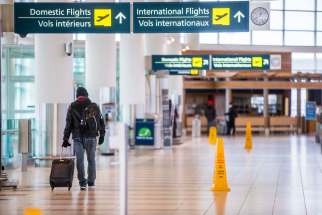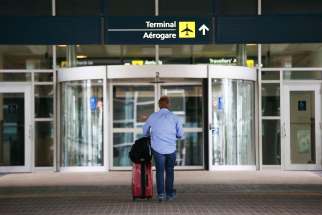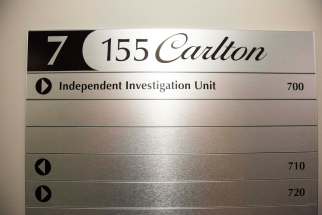Easing restrictions brings predictable results
Read this article for free:
or
Already have an account? Log in here »
To continue reading, please subscribe:
Monthly Digital Subscription
$0 for the first 4 weeks*
- Enjoy unlimited reading on winnipegfreepress.com
- Read the E-Edition, our digital replica newspaper
- Access News Break, our award-winning app
- Play interactive puzzles
*No charge for 4 weeks then price increases to the regular rate of $19.00 plus GST every four weeks. Offer available to new and qualified returning subscribers only. Cancel any time.
Monthly Digital Subscription
$4.75/week*
- Enjoy unlimited reading on winnipegfreepress.com
- Read the E-Edition, our digital replica newspaper
- Access News Break, our award-winning app
- Play interactive puzzles
*Billed as $19 plus GST every four weeks. Cancel any time.
To continue reading, please subscribe:
Add Free Press access to your Brandon Sun subscription for only an additional
$1 for the first 4 weeks*
*Your next subscription payment will increase by $1.00 and you will be charged $16.99 plus GST for four weeks. After four weeks, your payment will increase to $23.99 plus GST every four weeks.
Read unlimited articles for free today:
or
Already have an account? Log in here »
Hey there, time traveller!
This article was published 29/01/2021 (1774 days ago), so information in it may no longer be current.
It is impossible for public-health officials, and the political leaders who oversee them, to anticipate every possible consequence of pandemic health orders. There are just too many variables in place.
That having been said, the Manitoba government needs to focus a little less on celebrating its folksy faith in our ability “to do the right thing,” and a bit more on addressing our tendency to push the limits of public-health orders.
The most recent easing of restrictions on retail businesses is an excellent case in point. Re-opening non-essential retail stores was a good decision, and safe with the right array of conditions. Unfortunately, it seems the provincial government did not think through all of the potential consequences.
The slight easing of economic restrictions to allow non-essential retail businesses to reopen took effect last Saturday at 12 a.m. By mid-day, huge crowds had packed common areas of shopping malls, while long lines of shoppers assembled outside stand-alone big-box retailers.
This was exactly, expressly what Premier Brian Pallister and public-health officials said they did not want. But this was also exactly, expressly what the letter of the revised public-health order allowed.
Although retail businesses and common areas of malls were limited to 25 per cent of normal capacity to a maximum of 250 people, the common areas of shopping malls had no maximum limit. The result was that many hundreds of people were left in close contact with each other inside the malls. Hundreds more queued up outside stores.
As it became clear Manitobans were taking full advantage of the revised rules, the provincial government could only shake its collective head. Chief public health officer Dr. Brent Roussin once again cautioned Manitobans about pushing the limits of public-health orders because COVID-19 tends to flourish when people gather in large numbers.
“It’s the nature of this virus, the more we gather, the more spread we’re going to have,” he said.
Dr. Roussin did not talk about the nature of human beings, but he clearly understands we’re mostly programmed to try to find ways of doing as much as the letter of the rules will allow us — even when that violates the spirit of the rules.
With this understanding of human nature available, one might be inclined to ask why public-health orders are not structured to anticipate and address attempts to violate the spirit of the rules. The key, according to some in the provincial government, is enforcement.
But while it is true that an increasing number of tickets have been handed out to individuals and businesses for violating the letter of the public-health orders, enforcement can do nothing against those who violate the spirit.
We all want as many things open as possible, with as few restrictions as necessary. And with Winnipeg’s COVID-19 test-positivity rate continuing to decline, inching encouragingly below the five-per-cent threshold by week’s end, there’s reason to believe public-health measures and an expanding vaccination rollout will eventually lead to even more opportunities for resuming “normal” activities.
But we won’t get to full reopening unless public-health orders are crafted in a more thoughtful and explicit manner, and adhered to in spirit as well as in letter.
In this regard, more information — and more specific information — is the best antidote to pandemic-restriction abuses.









